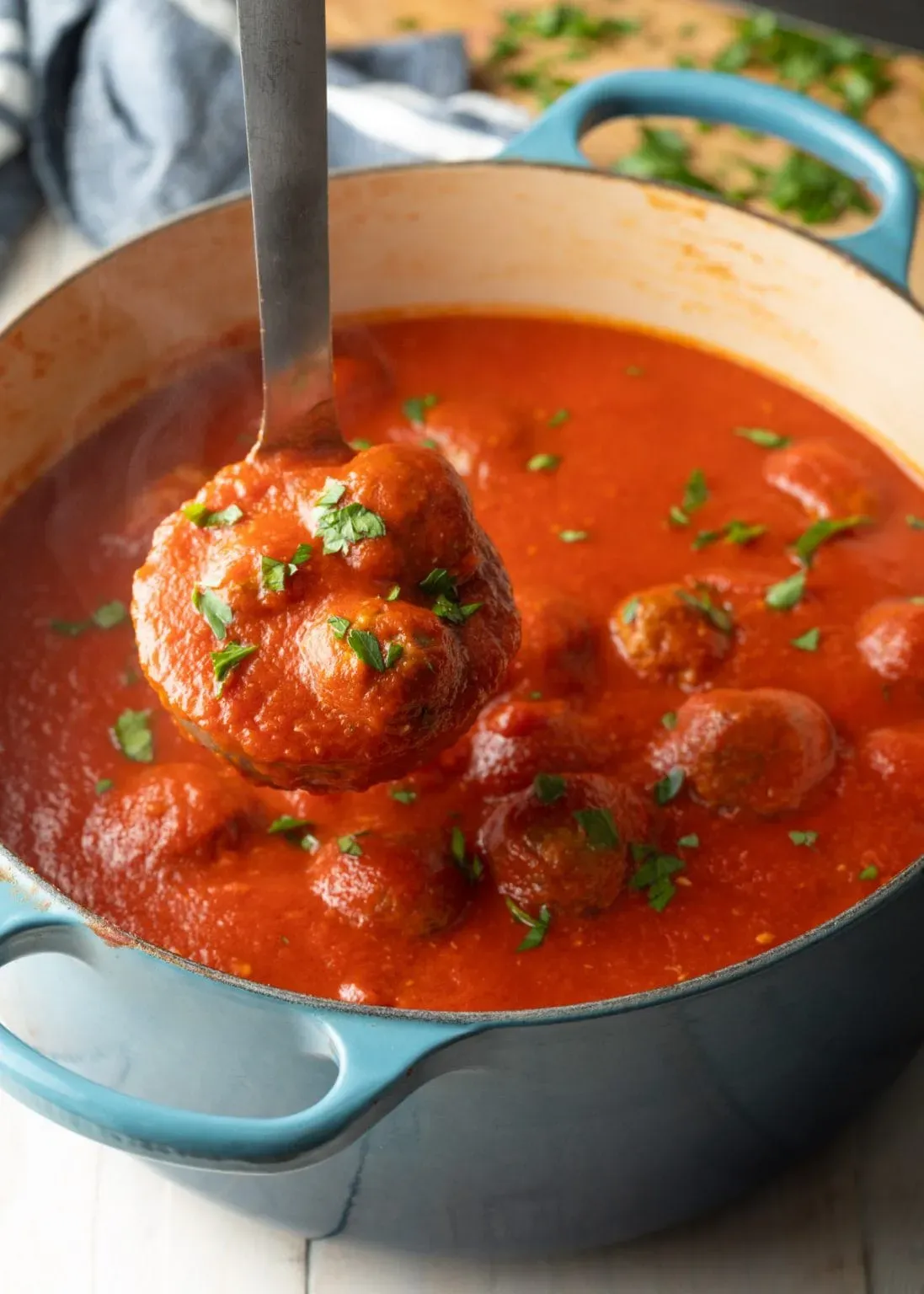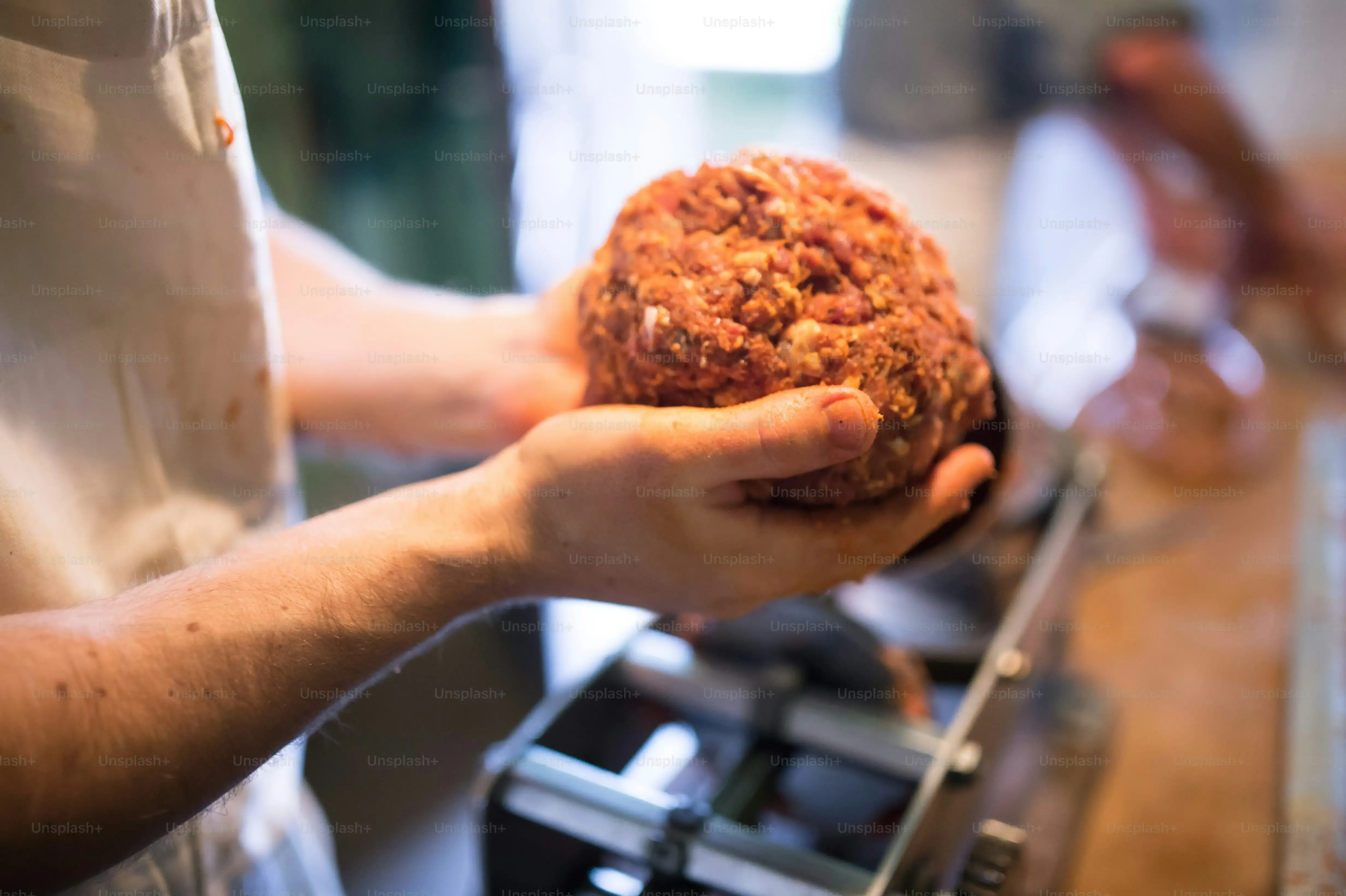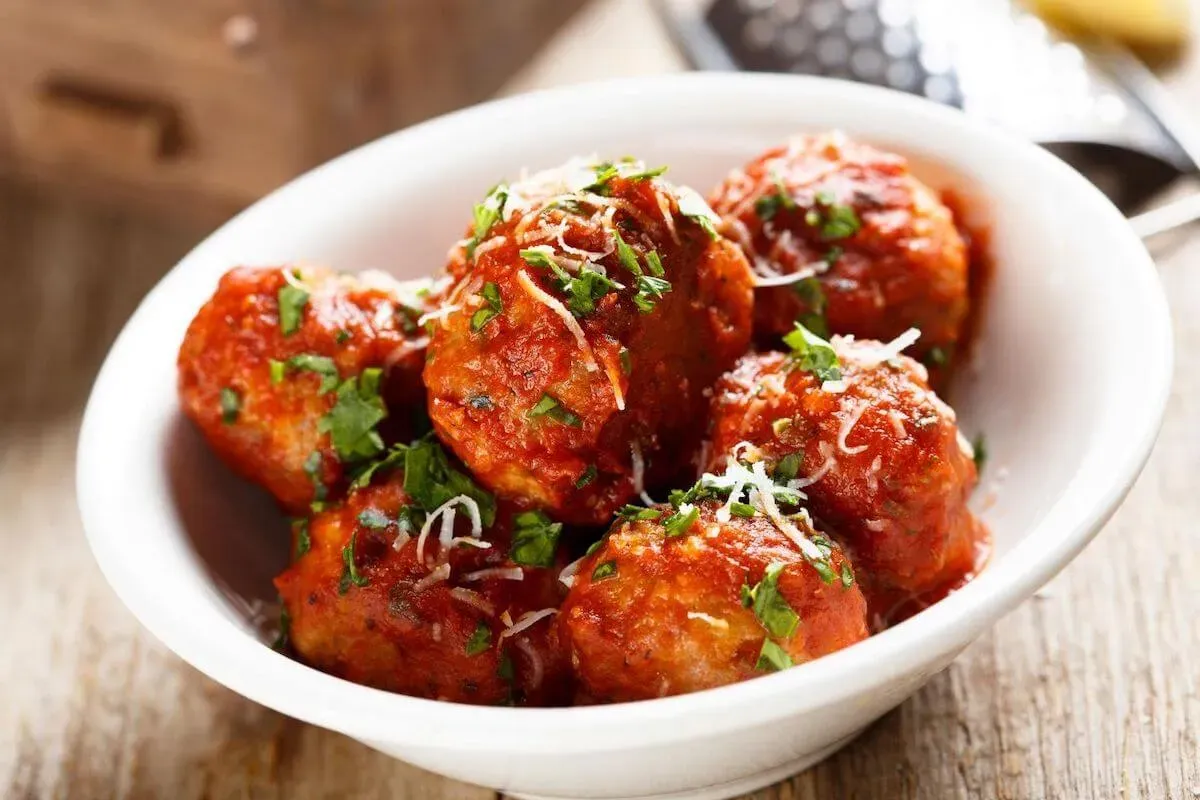Table of Contents
Let's be honest, making meatballs can feel like a gamble. Will they be little flavor bombs, or will they turn out dry, dense, and utterly disappointing? Nobody wants a meatball that tastes like cardboard. If you've struggled to achieve that perfect balance of tender and juicy, it might be time to switch up your game. Forget those all-beef hockey pucks. The secret to truly spectacular, moist, and flavorful spheres of deliciousness often lies in the blend. That's where a great italian meatball recipe pork comes into play.
Why Pork Makes a Difference in Italian Meatballs

Why Pork Makes a Difference in Italian Meatballs
The Fat Factor: Moisture and Flavor
let's talk about fat. I know, some folks flinch at the word, but in the world of meatballs, fat is your friend. Especially pork fat. Lean ground beef is fine for burgers, maybe, but for meatballs that stay tender and juicy through simmering, you need something more. Pork brings a higher fat content than most cuts of beef typically used for grinding.
This fat renders down slowly as the meatballs cook, essentially basting the meat from the inside. It keeps the protein fibers from seizing up and drying out. Think of it as built-in insurance against those dry, crumbly sad sacks you sometimes encounter. Beyond just moisture, pork fat carries flavor beautifully. It adds a richness and a savory depth that purely beef meatballs often lack, giving your sauce something extra to cling to and absorb.
Beyond Moisture: A Deeper, Richer Taste
It's not just about the fat, though that's a big part of it. Pork meat itself has a different flavor profile than beef. It's slightly sweeter, less intensely "beefy," and provides a wonderful base for the other ingredients in a classic italian meatball recipe pork – the garlic, the herbs, the cheese. This subtle sweetness balances the savory elements and prevents the meatballs from tasting one-dimensionally heavy.
Mixing pork with beef, or even using pork on its own, creates a more complex and nuanced flavor. It’s like the difference between a solo performance and a well-tuned orchestra. Each component plays its part, but together they create something far more interesting and satisfying. If you've been making meatballs with just beef and wondering why they're just... okay, the answer might be right here.
Why Mix Pork and Beef?
- Pork adds moisture and prevents dryness.
- Pork fat enhances flavor and richness.
- Pork provides a slightly sweeter note balancing savory ingredients.
- Combining pork and beef creates a more complex taste.
- It's a classic Italian approach for a reason.
Essential Ingredients for Your Italian Meatball Recipe Pork

Essential Ingredients for Your Italian Meatball Recipe Pork
The Meat Blend: Getting it Right
Alright, let's get down to the guts of it – the meat. For a killer italian meatball recipe pork, you can't just grab any old ground meat. While you *can* make them with just pork, the classic approach, and frankly, the one that delivers the most balanced flavor and texture, is a mix. A common and excellent ratio is 1:1:1 pork, beef, and maybe veal if you're feeling fancy and want extra tenderness. Or, a solid 50/50 pork and beef works beautifully too. The key is using ground pork that isn't *too* lean. Look for something around 20% fat. This gives you that crucial moisture we talked about earlier.
Don't get hung up on using the absolute most expensive cuts. Ground pork shoulder or a mix labeled "ground pork" is usually perfect. For beef, ground chuck is a reliable choice – good flavor, decent fat content. Using a blend means you get the richness and moisture from the pork, the classic savory depth from the beef, and the delicate texture from veal if you add it. It's a team effort, and each player brings something vital to the game.
Breadcrumbs and The Soak: Building Tenderness
Next up, the breadcrumbs. Forget the dried, dusty stuff in the canister if you can. Fresh breadcrumbs are a game-changer for your italian meatball recipe pork. Grab a few slices of good quality stale bread (day-old Italian or French bread works wonders), crusts removed, and pulse them in a food processor until you get coarse crumbs. These absorb liquid much better than dried crumbs, leading to a more tender meatball.
And the liquid? This is where things get juicy, literally. You need to soak those fresh breadcrumbs. Milk is traditional, adding a bit of richness, but water works perfectly fine too. Just pour enough over the crumbs to moisten them thoroughly, then let them sit for a few minutes. This pre-hydrates the bread, preventing it from stealing moisture from the meat as it cooks. It's a small step that makes a huge difference in the final texture.
Breadcrumb & Liquid Tips:
- Use fresh breadcrumbs from stale bread for best results.
- Soak breadcrumbs in milk or water before adding to the meat mix.
- Soaking prevents dry, dense meatballs.
- Squeeze out excess liquid from soaked crumbs before adding to the mix.
- The amount of liquid needed depends on the bread's dryness.
Binders and Flavor Bombs: Eggs, Cheese, and Herbs
Now for the glue and the glory. Eggs are your primary binder, holding everything together so your meatballs don't fall apart in the sauce. Usually, one or two eggs per pound of meat mix is about right. Don't add too many, or you end up with a rubbery texture. Then come the flavor powerhouses: grated Parmesan cheese, fresh garlic (minced finely or grated on a microplane), and fresh herbs like parsley and maybe a pinch of oregano or basil. Grating the garlic instead of mincing helps distribute its flavor evenly without those sharp raw bits.
Salt and black pepper are non-negotiable. Be generous but taste a tiny cooked bit before rolling everything to adjust seasoning. Some people add a pinch of red pepper flakes for a little warmth. It's your italian meatball recipe pork, so feel free to tweak the herbs and spices to your liking, but don't skip the garlic, cheese, or parsley. They are the soul of an Italian meatball.
Mixing and Shaping Your Perfect Italian Meatball Recipe Pork

Mixing and Shaping Your Perfect Italian Meatball Recipe Pork
Gentle Hands Make Happy Meatballs
you've got your beautifully blended meat, your soaked breadcrumbs, the cheese, the herbs, the garlic – all the good stuff for your italian meatball recipe pork is in the bowl. Now, the absolute key to tender meatballs: do not, under any circumstances, overmix. Think of the meat mixture like a fussy baby; handle it too roughly, and it gets tough and cranky. Use your hands, or a fork, to gently combine everything until just incorporated. You want the ingredients distributed, but you don't want to turn the meat into a paste. Overmixing develops the protein strands, making the meatballs dense and rubbery – the exact opposite of what we're aiming for.
Cooking Your Italian Meatball Recipe Pork: Fry, Bake, or Simmer?

Cooking Your Italian Meatball Recipe Pork: Fry, Bake, or Simmer?
The Sizzle Factor: Pan-Frying for Flavor
So, you've got your perfectly mixed and shaped italian meatball recipe pork ready to go. Now comes the crucial decision: how to cook them? Pan-frying is the classic move for a reason. It gives the meatballs a beautiful golden-brown crust, locking in juices and adding a layer of caramelized flavor that you just don't get otherwise. Heat a generous amount of olive oil (or a mix of olive oil and a neutral oil like canola) in a large skillet over medium-high heat. You want enough oil to come about halfway up the sides of the meatballs. Carefully add your meatballs, making sure not to crowd the pan – cook them in batches if needed.
Let them cook undisturbed for a few minutes until they release easily and are nicely browned on the bottom, then gently turn them to brown all sides. This usually takes about 8-10 minutes total for medium-sized meatballs. They won't be cooked all the way through, and that's fine. The exterior is browned, the flavor is built, and they're ready for their next step – usually simmering in that glorious tomato sauce. Don't skip this step if you want maximum flavor payoff from your italian meatball recipe pork.
Gentler Heat: Baking or Simmering Directly
Maybe you're making a massive batch, or maybe you just don't want to deal with hot oil splattering everywhere. Baking is a solid alternative for cooking your italian meatball recipe pork. Arrange your meatballs on a baking sheet lined with parchment paper or foil (for easy cleanup). Bake them in a preheated oven at around 375°F (190°C) for about 15-20 minutes, or until they're firm and lightly browned. They won't get that deep, craggy crust you get from frying, but they cook evenly and you can do a lot at once. This is a good method if they're going straight into a long-simmering sauce afterward.
Another option, though less common for starting out, is to simmer your italian meatball recipe pork directly in the sauce from raw. This is a technique some nonnas swear by, claiming it keeps them incredibly tender as they absorb the sauce's flavor from the start. However, you miss out on that initial browning which adds significant flavor. If you go this route, make sure your sauce is simmering gently and cook them for at least 20-25 minutes, or until cooked through. It's a trade-off between convenience/tenderness and that browned exterior flavor.
So, which method is best for your italian meatball recipe pork?
- Pan-Frying: Best flavor development, creates a crust, requires more active attention.
- Baking: Easiest for large batches, less mess, less crust development.
- Simmering Raw: Maximum tenderness, absorbs sauce flavor deeply, no crust, requires fully cooked sauce.
Serving Suggestions for Your Homemade Italian Meatball Recipe Pork

Serving Suggestions for Your Homemade Italian Meatball Recipe Pork
The Classic Pairing: Pasta and Sauce
Alright, you've put in the work. You've mixed, shaped, and cooked your beautiful italian meatball recipe pork. Now comes the best part: eating them. The most iconic way, of course, is tossed with pasta and your favorite tomato sauce. Whether it's a slow-simmered Sunday gravy or a quick weeknight marinara, these meatballs are built to soak up that acidic richness. Drop the cooked meatballs directly into your simmering sauce during the last 15-20 minutes of cooking. This allows them to finish cooking gently (if they weren't fully cooked before) and, more importantly, absorb all that wonderful flavor. Serve them over spaghetti, rigatoni, or even polenta. A generous shower of grated Parmesan cheese is mandatory, maybe a little extra fresh basil if you're feeling fancy.
Beyond the Bowl: Sandwiches and Appetizers
But don't think your delicious italian meatball recipe pork is limited to just pasta night. These bad boys are incredibly versatile. Pile them into crusty rolls with sauce and melted provolone or mozzarella for an epic meatball sub. Toast the rolls first, if you want to get serious about texture. Or, serve them as appetizers. Skewer smaller meatballs with cherry tomatoes and basil leaves, then drizzle with balsamic glaze. A platter of warm meatballs in a simple tomato sauce with toothpicks is always a crowd-pleaser at any gathering. Leftovers, if you're lucky enough to have any, are fantastic cold on a sandwich the next day, though I rarely have enough survive that long in my house.
Wondering what else pairs well?
- Creamy polenta
- Crusty Italian bread for dipping in the sauce
- Roasted vegetables like broccoli or zucchini
- A simple green salad with a vinaigrette
- Mashed potatoes (seriously, try it)
Your Perfect Italian Meatball Recipe Pork Awaits
So there you have it. Moving beyond all-beef and embracing pork in your italian meatball recipe pork isn't just a suggestion; it's practically a requirement for achieving those sought-after juicy, tender results. We've covered the why, the how, and the ways to cook them right. No more settling for dry, sad meatballs. With a bit of attention to your ingredients and mixing technique, you're well on your way to making meatballs that hold their own, whether swimming in marinara or served solo. Give the pork a shot, and taste the difference it makes.